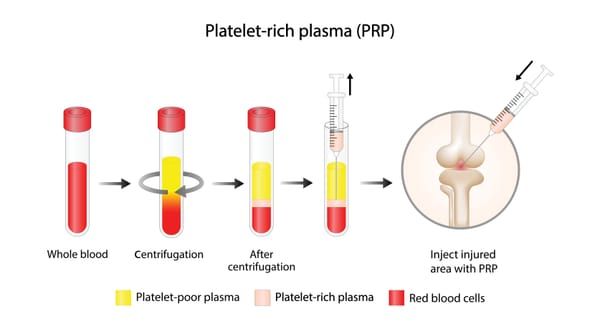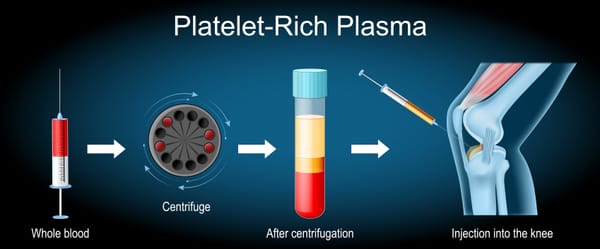Exploring Stellate Ganglion Block as a Treatment for POTS: A New Frontier?

Postural Orthostatic Tachycardia Syndrome (POTS) is a challenging condition that disrupts the lives of millions, causing symptoms like rapid heartbeat, dizziness, and fatigue when standing.
While traditional treatments like lifestyle changes and medications help many, some people with POTS continue to struggle with persistent symptoms. Enter stellate ganglion block (SGB)—a procedure gaining attention for its potential to ease POTS symptoms by targeting the autonomic nervous system.
In this blog post, we’ll dive into what SGB is, how it might help with POTS, and what the latest insights say about this emerging treatment.
What is a Stellate Ganglion Block?
A stellate ganglion block is a minimally invasive procedure where a local anesthetic (sometimes combined with a steroid) is injected near the stellate ganglion, a cluster of nerves in the neck that’s part of the sympathetic nervous system. This system plays a key role in regulating “fight or flight” responses, including heart rate and blood pressure—functions that go haywire in POTS. By temporarily “calming” these nerves, SGB aims to reset the autonomic nervous system, potentially reducing symptoms driven by sympathetic overactivity.
Originally used for conditions like chronic pain and post-traumatic stress disorder (PTSD), SGB is now being explored for disorders like POTS, where autonomic dysfunction is a core issue. The procedure is typically performed by an anesthesiologist or pain specialist using ultrasound guidance to ensure precision, and it takes about 15-30 minutes. Effects can last from days to months, and some patients receive multiple blocks for sustained relief.
Why Consider SGB for POTS?
POTS is often linked to an overactive sympathetic nervous system, which can cause excessive heart rate spikes and other symptoms when standing. SGB’s ability to modulate this system makes it a promising candidate for POTS treatment. Here’s why it’s generating buzz:
- Symptom Relief: Anecdotal reports and early studies suggest SGB can reduce symptoms like palpitations, fatigue, and brain fog in some POTS patients. For example, a Reddit user shared that after 11 years of fatigue and 10 months of severe POTS symptoms, a bilateral SGB drastically reduced their palpitations and improved their quality of life.
- Targeting Dysautonomia: POTS is a form of dysautonomia, and SGB has shown promise in other dysautonomia-related conditions, like long COVID, which shares symptoms with POTS, such as orthostatic intolerance and tachycardia. A 2022 study found that 86% of long COVID patients experienced symptom improvement after SGB, including reduced tachycardia and dizziness.
- Potential for Rapid Results: Unlike medications that may take weeks to work, SGB can provide relief within hours or days, offering a quicker way to gauge its effectiveness.
What Does the Research Say?
While SGB is promising, research on its use for POTS specifically is still in its infancy. Most evidence comes from case studies, small cohorts, and related conditions like long COVID or PTSD. Here’s a snapshot of what we know:
- Case Reports: A 2023 case series highlighted SGB’s potential in dysautonomia, noting that it increased cerebral blood flow and alleviated symptoms like fatigue and brain fog in long COVID patients, which are common in POTS. Another report described a patient with complex PTSD, POTS, and other conditions who underwent 24 SGBs since 2020, reporting significant relief from sympathetic-driven symptoms.
- Mechanistic Support: SGB may work by reducing sympathetic overactivity and restoring balance between the sympathetic and parasympathetic nervous systems. This is particularly relevant for POTS subtypes like hyperadrenergic POTS, where elevated norepinephrine levels drive symptoms.
- Limited POTS-Specific Studies: Direct studies on SGB for POTS are scarce. A 2019 National Institutes of Health consensus meeting on POTS didn’t mention SGB as a standard treatment, focusing instead on lifestyle and pharmacological options. However, the overlap between POTS and long COVID symptoms has spurred interest in SGB, with ongoing research exploring its role in autonomic disorders.
The lack of large-scale, randomized controlled trials means SGB for POTS is still considered experimental. Experts caution that while early results are encouraging, more data is needed to establish its efficacy and safety for POTS specifically.What to Expect from SGBIf you’re considering SGB for POTS, here’s what the process might look like:
- Procedure: You’ll lie on a table, and the doctor will use ultrasound to locate the stellate ganglion. After numbing the area, they’ll inject the anesthetic. You may feel temporary side effects like a droopy eyelid, nasal stuffiness, or a warm sensation on one side of your face (Horner’s syndrome), which usually resolve within hours.
- Recovery: Most people go home the same day and can resume normal activities within 24 hours. Symptom relief, if it occurs, may be immediate or take a few days.
- Frequency: Some patients benefit from a single block, while others need repeated injections every few weeks or months for sustained effects.
Benefits and RisksPotential Benefits:
- Reduction in POTS symptoms like tachycardia, dizziness, and fatigue.
- Non-invasive compared to surgical options.
- May complement other treatments, like medications or exercise programs.
Risks and Considerations:
- Temporary side effects like Horner’s syndrome or neck soreness.
- Rare risks include infection, bleeding, or nerve injury.
- Variable response—SGB doesn’t work for everyone, and relief may be temporary.
Is SGB Right for You?
SGB isn’t a one-size-fits-all solution, and it’s not a first-line treatment for POTS. Experts recommend trying conservative therapies first, like increasing fluid and salt intake, wearing compression garments, and starting a structured exercise program. Medications like beta-blockers or fludrocortisone may also help. If these don’t provide enough relief, SGB could be worth discussing with your doctor, especially if you have hyperadrenergic POTS or symptoms linked to sympathetic overactivity.
Before pursuing SGB, consider:
- Consulting a POTS specialist or neurologist to confirm your diagnosis and subtype.
- Finding a provider experienced in SGB, ideally one familiar with dysautonomia.
The Road Ahead
Stellate ganglion block is an exciting frontier in POTS treatment, offering hope for those who haven’t found relief through conventional methods.
If you’re living with POTS, talk to your healthcare team about whether SGB could be part of your treatment plan. In the meantime, connecting with POTS communities, like those on Reddit or Dysautonomia International, can provide support and insights from others exploring similar paths.
POTS is a complex condition, but innovations like SGB remind us that new possibilities are on the horizon. Stay hopeful, stay informed, and keep advocating for your health.
Disclaimer: This blog post is for informational purposes only and not a substitute for professional medical advice. Consult a healthcare provider before considering stellate ganglion block or any new treatment for POTS.



